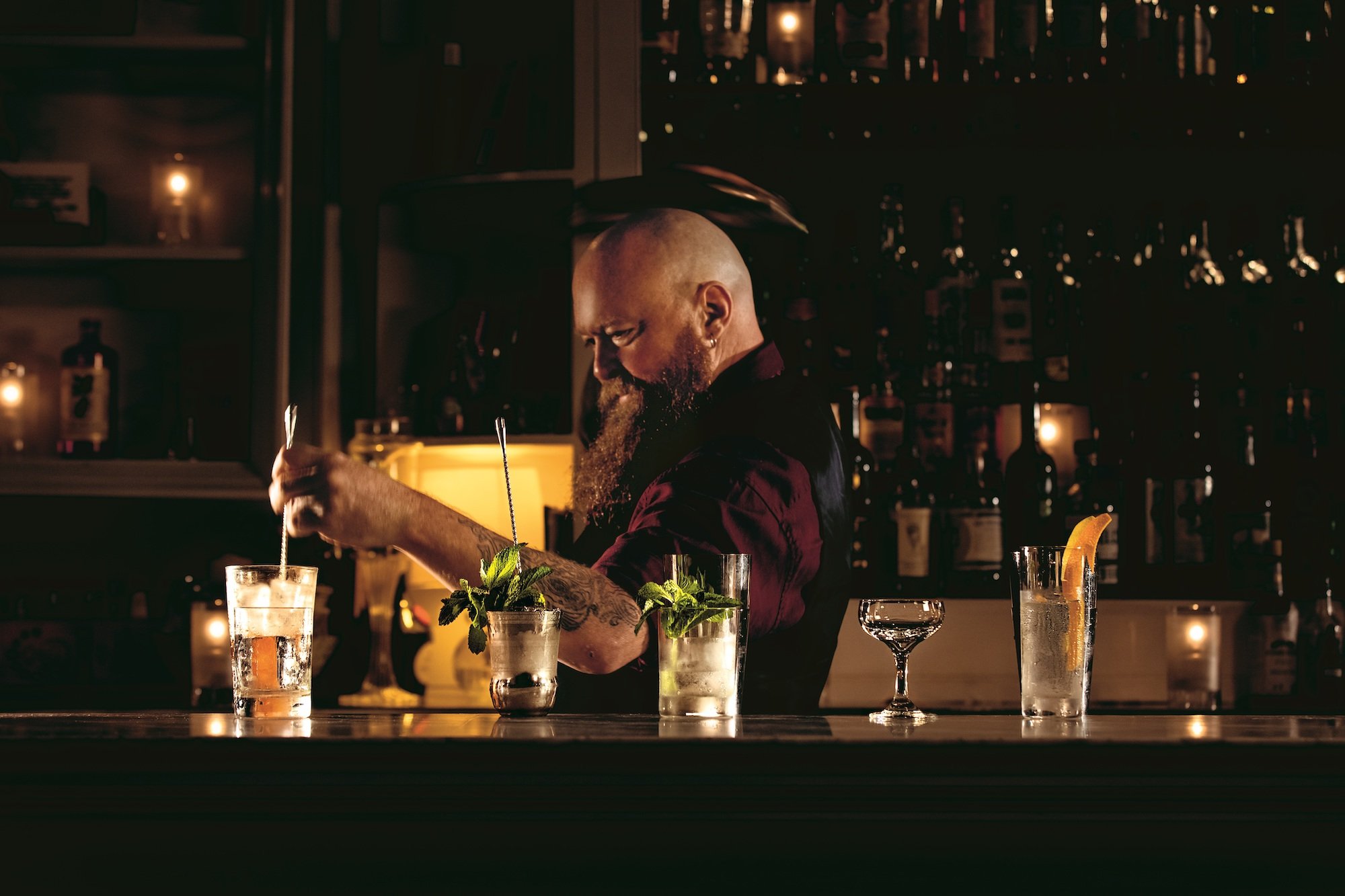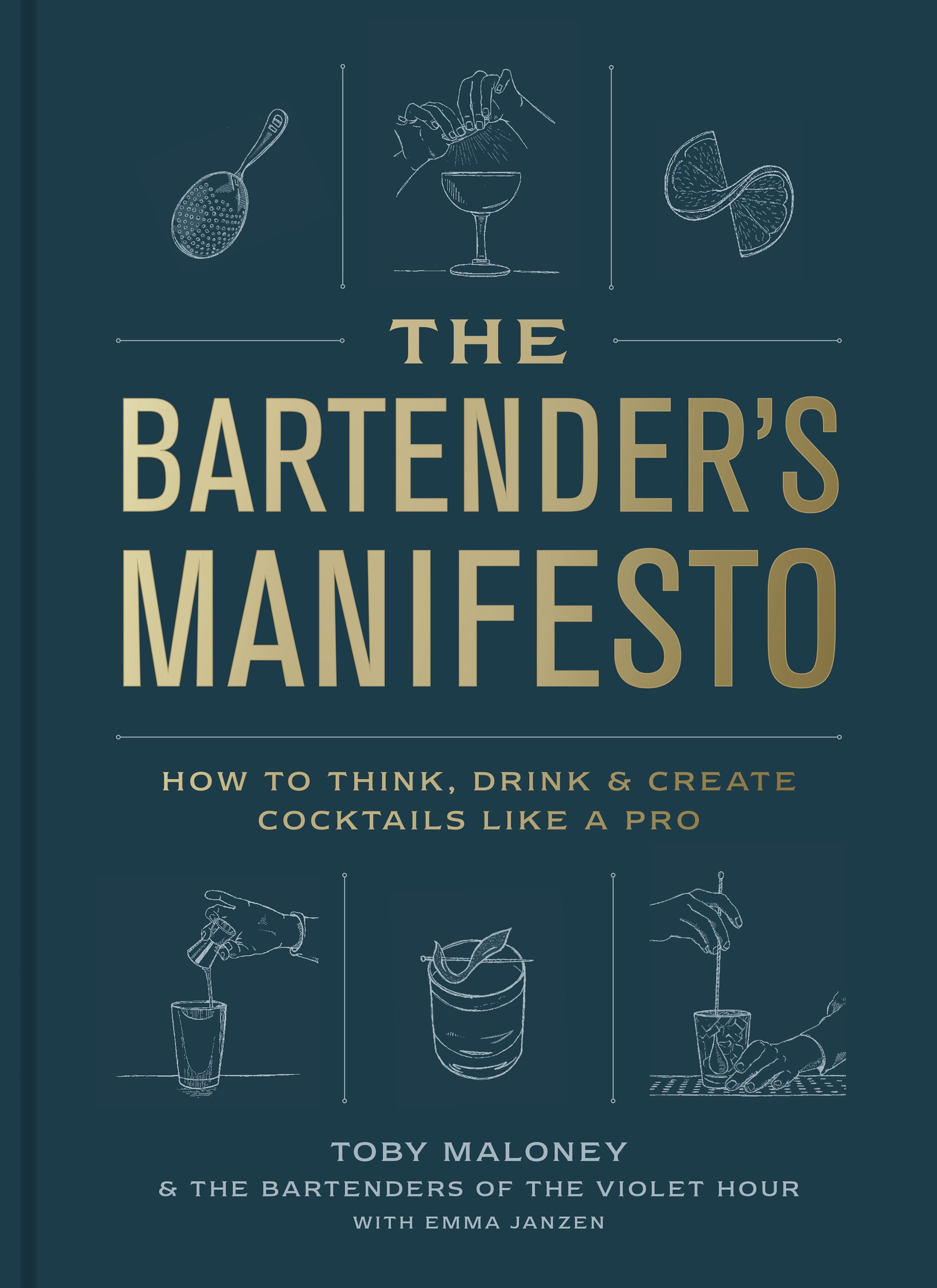Boozy Book Review: The Bartender’s Manifesto by Toby Maloney, Emma Janzen, and The Bartenders of the Violet Hour
Toby Maloney
This is the bartending book for bartenders who’ve already read a lot of bartending books and are sure they don’t need another. Toby Maloney, an owner of Chicago’s famed Violet Hour, has written a guide that is largely how to think about bartending and cocktail creation, more than a guide to bartending and creating cocktails.
The distinction is important. It is about bartending and creating drinks with intention rather than according to formula. It is mis en place for the mind.
Overview
In The Bartender’s Manifesto Maloney (along with co-author Emma Janzen who also co-authored The Way of the Cocktail with Julia Momosé) lays it all out in five sections: Cocktail Mechanics, Drink Philosophies, Recipe Flourishes, Bartending Tenets, and Creative Process. In the first he shares how he establishes baselines for ingredients by picking a touchstone spirit for each category and then comparing others to it: is this gin I’m evaluating more or less juniper-forward, more or less citrusy, lower or higher proof than my touchstone Beefeater? Similarly, he places 1:1 simple syrup as a 5 out of 10 on a sweetness scale and rates others against it (maple syrup is at 3.75 and homemade grenadine is at 7.25).
Techniques Defined & Named
Sometimes this tool-building is formalizing vocabulary around processes we already know. He divides shaking and stirring into the coupe shake, collins shake, whip shake, coupe stir, chunk stir, and rocks stir. A bartender should understand already that they should shake a cocktail that will later have added carbonated liquids to it for a shorter time than a cocktail that is going right into a coupe glass exactly as-is. Here these are divided into the collins shake (the drink upon straw-tasting after shaking might be slightly boozy, bold, and sweet) versus the perfectly ready cocktail resulting from a longer and more dilution-added coupe shake. Drink recipes listed in the book refer to these distinct shakes and stirs in their instructions, reinforcing the lesson.
Other tips in the Cocktail Mechanics section include how each type of citrus twist impacts drinks differently (orange is warming and implies sweetness, for example), how cocktails should be “bottomed” with their splash of soda or champagne rather than topped with it, and why “texture is the single most important element of a cocktail.” At the end of each of the first four parts of the book are 25 recipes designed to demonstrate the manifestation of the concepts of that section. This invites the reader to look closely at each recipe for what it can teach us, even if we never intend to make the drink ourselves.
Philosophies & Flourishes
In the Drink Philosophies section, Maloney quickly covers material that will be familiar to professional bartenders who have collaboratively created menus: a drink might need to be invented to fill a hole on the menu for something stirred and savory with a gin base, for example, so that’s the starting point. Or perhaps you are designing drinks around comfort that can be evoked by playing up sense memories, well-wornm classics, and ritual serves. Or, rather than create a drink that stimulates emotions, you might create one that stimulates the mind and sparks curiosity – the “surprise and delight” experience in liquid form.
In Recipe Flourishes, we learn several techniques for layering flavors “in a way that will transform a good drink into an extraordinary one.” These techniques are echoing, complementing, juxtaposition, and narrative arc, and they include tricks such as stacking ingredients with the same flavor note (like mint plus Fernet-Branca) or opposite ones (like a lemon peel on a bourbon drink). You probably already know that Fernet tastes minty and it can work together with mint in a drink and The Bartender’s Manifesto doesn’t spend much time naming a bunch of specific flavor combinations; what it does is give names to potential tools to use when you’re in the situation of needing “a little something to make this drink pop.”
Refreshingly, the book skips most of the basics of bartending and explaining cocktail categories, assuming the reader is familiar with them already. Home bartenders can take away from this book more about the why of cocktails and their ingredients than the what of them. Professionals may benefit from some really excellent tricks and tips sprinkled throughout the text, in addition to the formalization of processes and vocabulary around tools, ingredients, and philosophies of drink creation.



